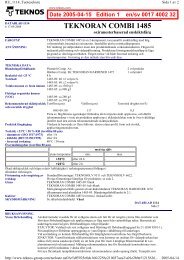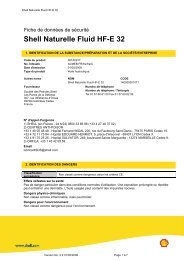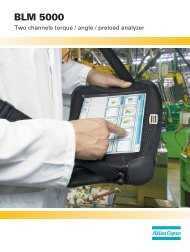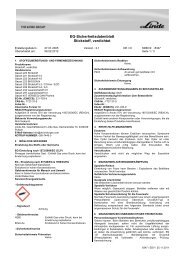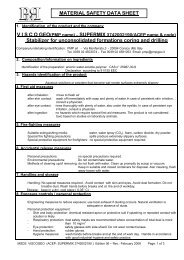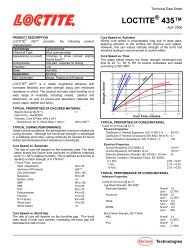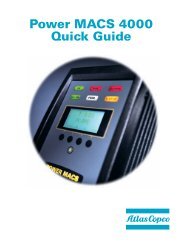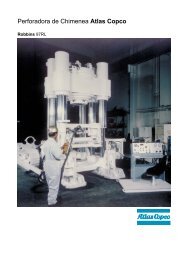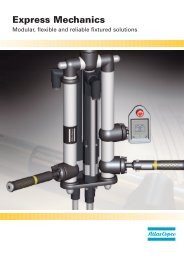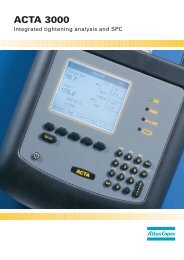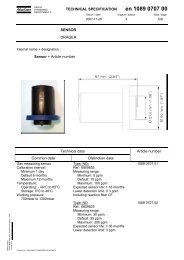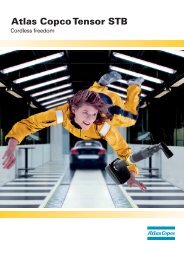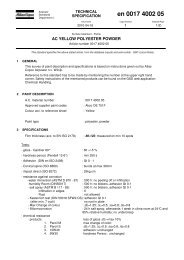Ergonomics - Atlas Copco
Ergonomics - Atlas Copco
Ergonomics - Atlas Copco
Create successful ePaper yourself
Turn your PDF publications into a flip-book with our unique Google optimized e-Paper software.
taken to tighten one screw, can be used. If<br />
that is not possible, use the values given in<br />
Table 3.10.<br />
Impact and impulse<br />
nutrunners<br />
The important forces are weight<br />
distribution of the tool, trigger<br />
forces, the feed force and, for bigger<br />
tools, the torque from the motor.<br />
Poor weight distribution might give a<br />
radial-flexion torque equal to the weight of<br />
the tool times the distance from the center<br />
of gravity to the center of the handle.<br />
Trigger force is normally handled with<br />
the index or long finger.<br />
In some applications feed force needs to<br />
be considered, e.g., applications where small<br />
impact tools are used for self-tapping bolts.<br />
The reaction torque acting on the han-<br />
dle is only a small fraction of the installed<br />
torque. The torque experienced is only<br />
the torque from the vane motor itself. For<br />
impulse tools this torque can be approxi-<br />
mated as the tool’s maximum torque capac-<br />
ity divided by 40 and for impact tools the<br />
corresponding figure is the maximal torque<br />
capacity divided by 120.<br />
Normal use of impact and impulse<br />
nutrunners involves fast movements. Fre-<br />
quency is more than 6 times per minute and<br />
duration is less than 3 seconds per screw<br />
Total duration can vary considerably. Try to<br />
find the real total duration for the workplace<br />
being analysed. Number of screws times<br />
the duration, i.e., time taken to tighten one<br />
screw can be used. If that is not possible use<br />
the values given in Table 3.10.<br />
Angle nutrunners<br />
The important forces are the reaction<br />
torque from the tightening, weight dis-<br />
tribution of the tool and trigger forces.<br />
The reaction torque from the tight-<br />
ening is regarded as a shock reaction<br />
if the tightening time is shorter than<br />
300 ms. When the tightening time ex-<br />
ceeds 300 ms the muscles in the hand-<br />
arm system have time to counteract and<br />
the torque reaction is assessed as a force<br />
acting on the hand-arm system.<br />
In most cases where the tool is used in<br />
a two-handed operation the force is handled<br />
as a standing pull force in the right arm<br />
and a slightly smaller standing push force<br />
in the left arm. This can vary considerably,<br />
depending on the posture required to reach<br />
the bolt to be tightened.<br />
Many problems relating to reaction<br />
torque are due to the fact that reaching the<br />
bolt requires awkward postures.<br />
In some cases angle nutrunners are<br />
85



